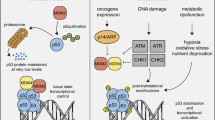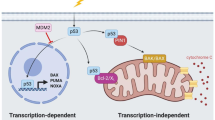Abstract.
The use of mouse models has greatly contributed to our understanding of the role of p53 in tumour suppression. Mice homozygous for a deletion in the p53 gene develop tumours at high frequency, providing essential evidence for the importance of p53 as a tumour suppressor. Additionally, crossing these knockout mice or transgenic expression p53 dominant negative alleles with other tumour-prone mouse strains has allowed the effect of p53 loss on tumour development to be examined further. In a variety of mouse models, absence of p53 facilitates tumorigenesis, thus providing a means to study how the lack of p53 enhances tumour development and to define genetic pathways of p53 action. Depending on the particular model system, loss of p53 either results in deregulated cell-cylce entry or aberrant apoptosis (programmed cell death), confirming results found in cell culture systems and providing insight into in vitro function of p53. Finally, as p53 null mice rapidly develop tumours, they are useful for evaluating agents for either chemopreventative or therapeutic activities.
Similar content being viewed by others
Author information
Authors and Affiliations
Rights and permissions
About this article
Cite this article
Attardi, L., Jacks, T. The role of p53 in tumour suppression: lessons from mouse models. CMLS, Cell. Mol. Life Sci. 55, 48–63 (1999). https://doi.org/10.1007/s000180050269
Published:
Issue Date:
DOI: https://doi.org/10.1007/s000180050269




